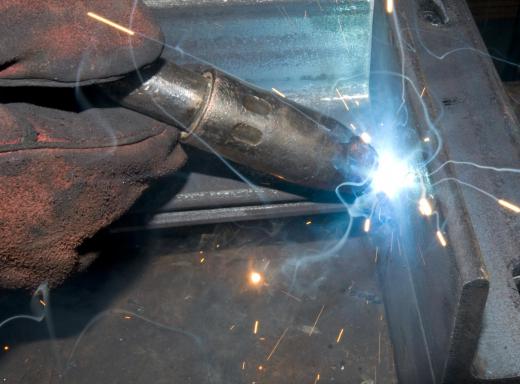Gas metal arc welding (GMAW) is an automatic or semi-automatic welding process. Shielding gas and a continuous, consumable wire electrode are fed through a welding gun. GMAW uses a constant power source such as voltage or a direct current to weld together materials such as steel and aluminum. GMAW is popular in industries such as car manufacturing due to its speed and versatility.
GMAW was first developed at the turn of the 19th century, when carbon were used. By the late 19th century, metal electrodes had been invented, and by 1920, General Electric invented the early predecessor of GMAW. By 1953, the use of carbon dioxide to weld was developed. It quickly gained popularity, as it made welding more economical.

GMAW is widely used by the sheet metal industry. Arc spot welding has replaced resistance or rivet welding. It is also used in robot welding, in which robots operate the welding gun and the sheet metal in order to save on time and cost. GMAW is not generally suitable for outdoor use, as changes in the atmosphere can cause the shielding gas to dissipate and the quality of the weld to be inferior. It is also unsuitable for underwater welding for the same reasons.

The equipment used in GMAW is a welding gun, a wire feed unit, an electrode wire and a shielding gas supply. When the control switch is turned on the wire feed, electrical power and gas flow are initiated. This causes an electric arc to be struck. The gas nozzle is used to direct the welding gas evenly into the welding zone.
The basic technique used in GMAW is quite simple. The operator guides the welding gun with care and orientation along the area to be welded. It is important to keep to a consistent tip-to-work distance, as the electrode may overheat or waste shielding gas. The correct angle of the gun is also important; it should be held at 45° when fillet welding and 90° when welding a flat surface.

GMAW can be extremely dangerous if the proper precautions are not taken. Welders must wear protective clothing, including long sleeved jackets capable of withstanding heat and flames. Leather gloves should also be worn when handling the welding gun. The brightness of the electric arc can also cause the retina in the eye to burn, so helmets with protective faceplates must be used to prevent exposure. GMAW should never be attempted without the implementation of all proper safety procedures.
